
The site of an infamous B.C. mining disaster could get even bigger. This First Nation is going to court — and ‘won’t back down’
Xatśūll First Nation is challenging B.C.’s approval of Mount Polley mine’s tailings dam raising. Indigenous...
Sean O’Rourke was hiking in B.C.’s globally rare inland rainforest this spring when pink flagging tape indicating a planned cutblock caught his eye. Finding flagging tape is nothing new, but when he looked closer, he realized the tape had the name of a nearby pellet company on it — Pacific BioEnergy.
The company operates a plant in Prince George where it turns waste wood products — sawdust from mills, tree bark, wood shavings and clippings — into pellets to be burned to produce heat or electricity, replacing coal and fossil fuels. More than 90 per cent of Canadian wood pellets are shipped overseas to Europe and Asia, according to the Wood Pellet Association of Canada.
But the ancient cedars and hemlocks in the rainforest in Lheidli T’enneh First Nation territory, about 60 kilometres east of Prince George, are most certainly not waste wood.
O’Rourke, a field scout with Conservation North, a grassroots organization advocating for the protection of old-growth forests in northern B.C., took photos of the flagging tape to show his colleagues. He later combed through the publicly available harvest data to confirm the province had indeed issued permits to Pacific BioEnergy to log the old-growth forest.
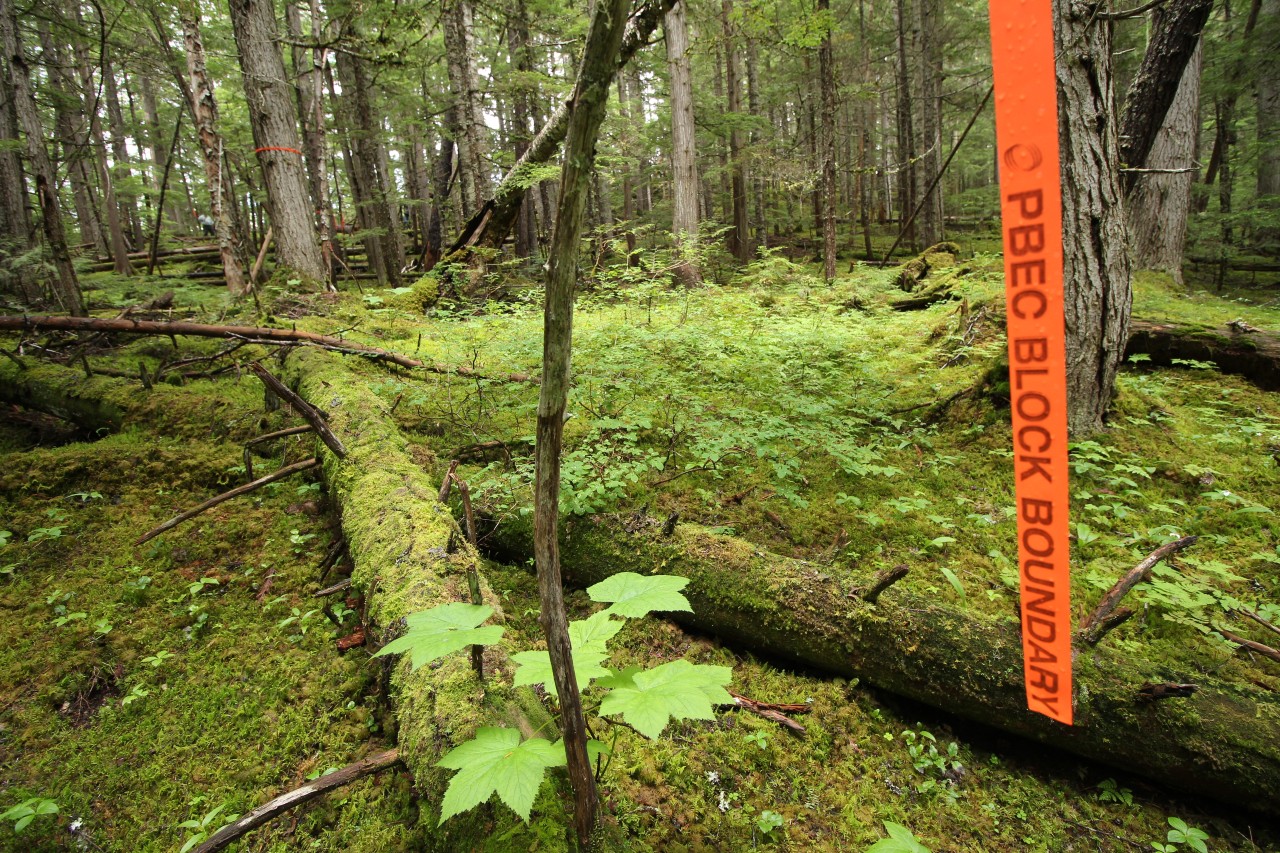
Flagging tape marked “PBEC” — Pacific BioEnergy Corporation — tipped off Conservation North field scout Sean O’Rourke that the area was going to be logged for pellets. Photo: Conservation North
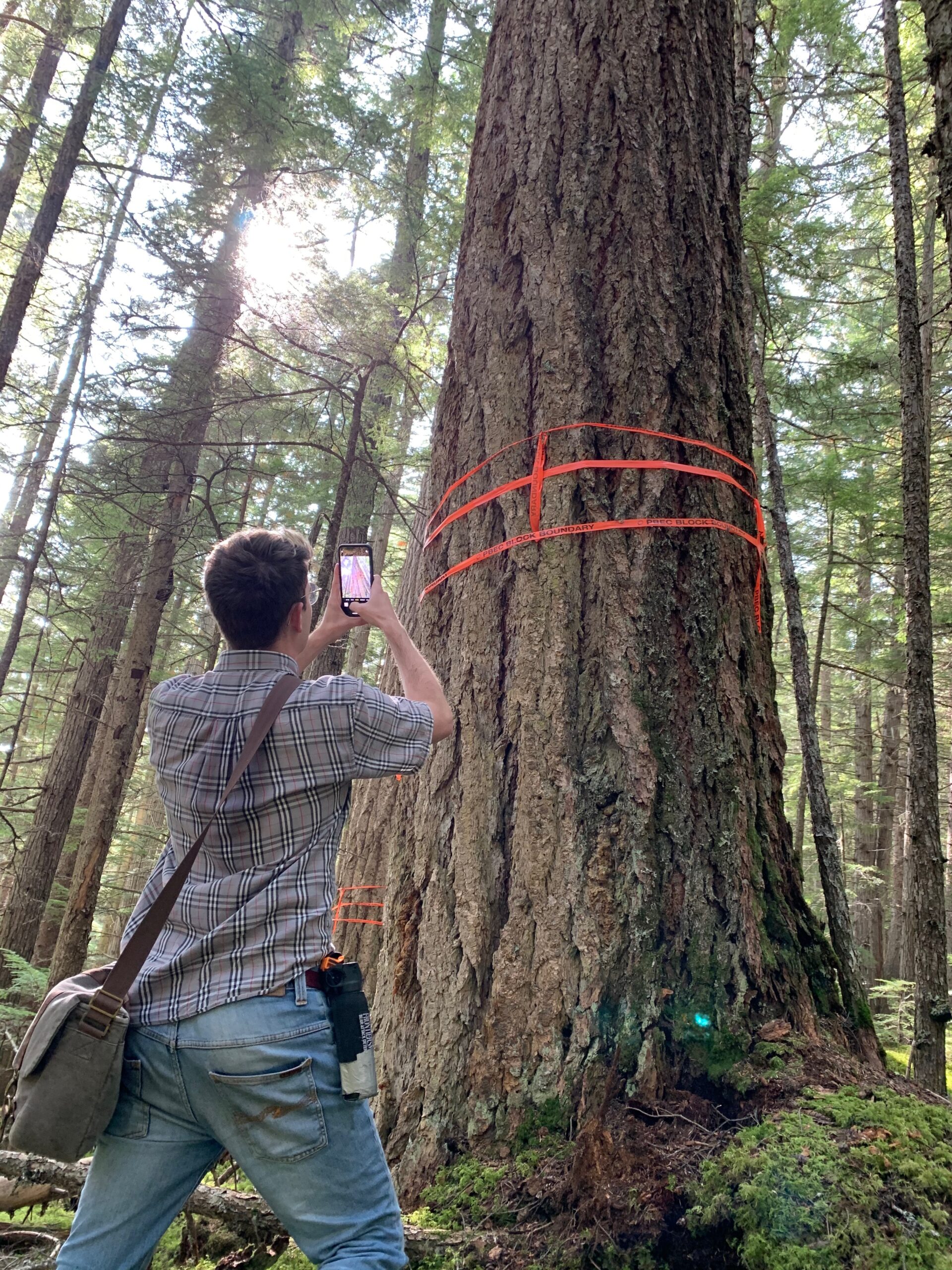
Sean O’Rourke takes a photo of a Douglas fir tree destined to be turned into wood pellets. Photo: Conservation North
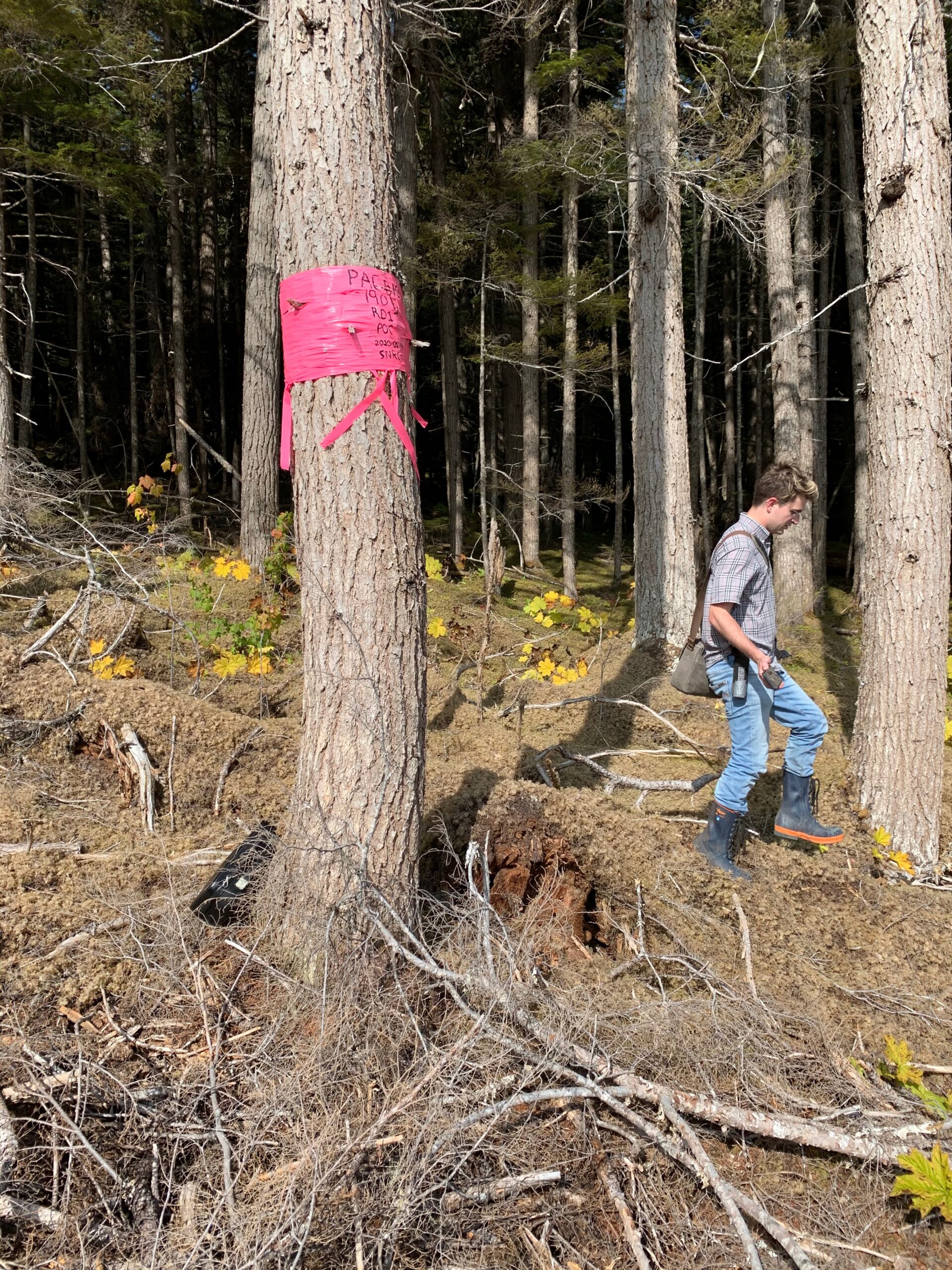
Sean O’Rourke spotted pink flagging tape in B.C.’s rare inland rainforest, a sign it was set to be logged. Photo: Conservation North
While wood pellets are often touted as a renewable energy source, Conservation North director and ecologist Michelle Connolly challenges that claim.
“If the raw material for harvested wood products or pellets is coming from primary and old-growth forest, it is not clean or green or renewable in any way, shape or form,” she said in an interview.
“Destroying wildlife habitat to grind forest into pellets to ship them overseas to burn, to feed into an electricity plant so that people can watch Netflix or play video games really late at night — we can’t allow that to happen,” she added.
The planned cutblock is set to be logged this winter for pellets, but Conservation North is asking the B.C. government to provide legal protection to all primary forests — those that have never been logged — in the northern region.
After O’Rourke showed his colleagues his photos, they went to the rainforest together to explore the areas slated for logging. The group walked for almost two hours to get to the flagged boundary. The forest is surrounded by clearcuts and second-growth stands of lodgepole pine. Connolly described it as an oasis.
“There are low carpets of moss and beautiful fallen old trees,” Connolly said. “The stands that we’ve seen have really large western red cedars and western hemlock, and we occasionally came across massive Douglas firs that are really large for this area … it would take at least three people to wrap your arms around them.”
More than 500 kilometres from the coast, the inland rainforest is one of the rarest ecosystems in the world. Temperate rainforests far from the sea are only found in two other places on the planet: in Russia’s far east and southern Siberia.
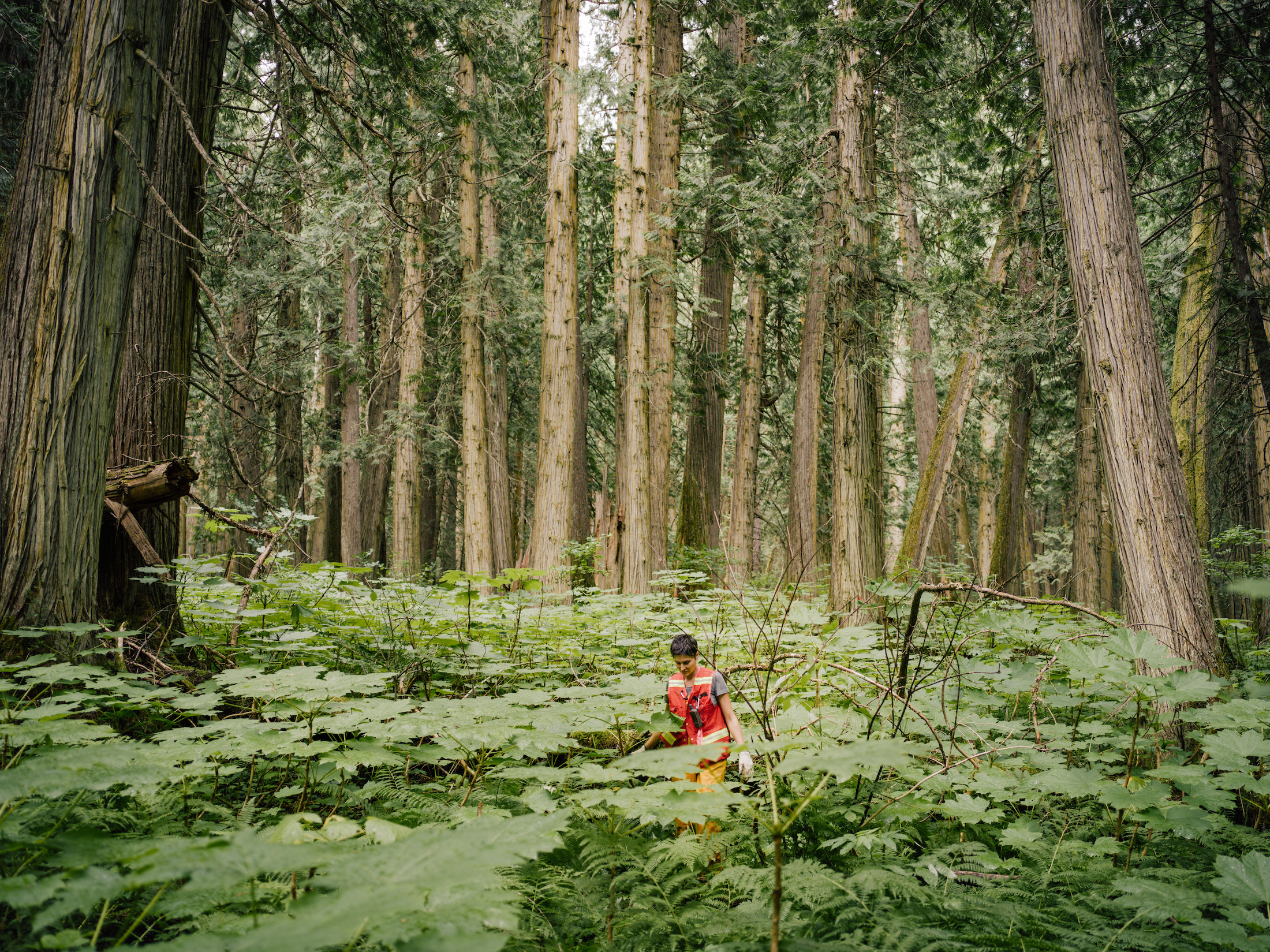
Forest ecologist Michelle Connolly surveys old-growth cedars in B.C.’s inland rainforest to estimate the amount of carbon the area holds. Photo: Taylor Roades / The Narwhal
The rainforest supports a variety of animals including moose and
endangered caribou. The stands of old-growth trees have been absorbing carbon from the atmosphere for hundreds of years, and the soil also stores huge amounts of carbon.
The rich biodiversity of these old-growth forest ecosystems is threatened by logging, according to a report published in June.
As The Narwhal reported last year, much of what remains of the inland temperate rainforest is at risk of clearcutting. Connolly said there is “little to no social licence” to harvest these old-growth trees.
“We talked to a lot of people who hunt, who trap, who fish, who guide, and among those people, we’ve sensed a lot of dismay about what’s happening,” she said. “We’re kind of at the limits of tolerance up here.”
The province’s promotion of the pellet industry focuses on using wood that would otherwise be wasted or burned in the forest to reduce the risk of wildfires, but rarely mentions the use of whole trees.
“The pellet pushers (including the present NDP government) originally said they would use only logging and milling debris as the source of wood fibre for pellets,” Jim Pojar, a forest ecologist wrote in an email.
However, a recent investigation by Stand.earth found that pellets made of whole trees from primary forests in B.C. are being sent to Europe and Asia.
“No mature green trees should be cut down and whole logs ground up to produce wood pellets for export, especially if the trees are clear cut from globally rare and endangered temperate rainforest,” Pojar said.
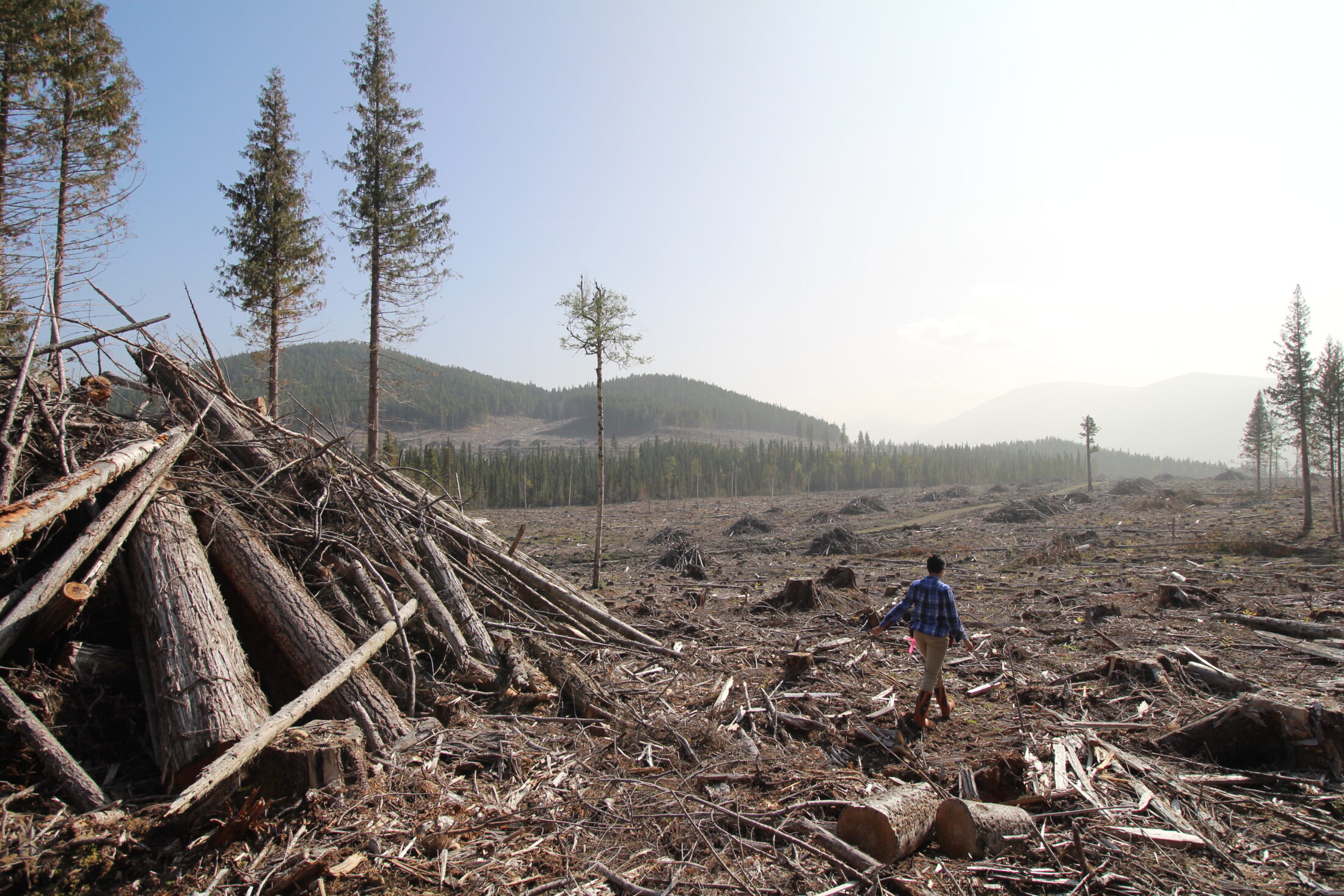
Conservation North director Michelle Connolly walks through a clear-cut area adjacent to the pellet cutblock. Photo: Conservation North
Connolly said a lack of legal protection allows the government to greenlight logging whole trees for pellets — and the province’s language around the industry hides the fact that old-growth is being cut down.
“My understanding is that this is allowed because these forests don’t have any other use,” she said, meaning that they aren’t suitable for making lumber.
“The B.C. government has some really interesting language around justifying pellet harvesting,” she said. “What they say is that they’re using inferior quality wood.
This isn’t the first time a pellet facility has logged trees to meet its production needs. As The Narwhal
reported earlier this year, both Pacific BioEnergy and Pinnacle Renewable Energy, another large-scale pellet company, use whole trees to produce pellets.
Over the past few years, B.C. has been ramping up its support for the wood pellet industry, but as sawmills shut down across the province, pellet facilities are running out of raw material.
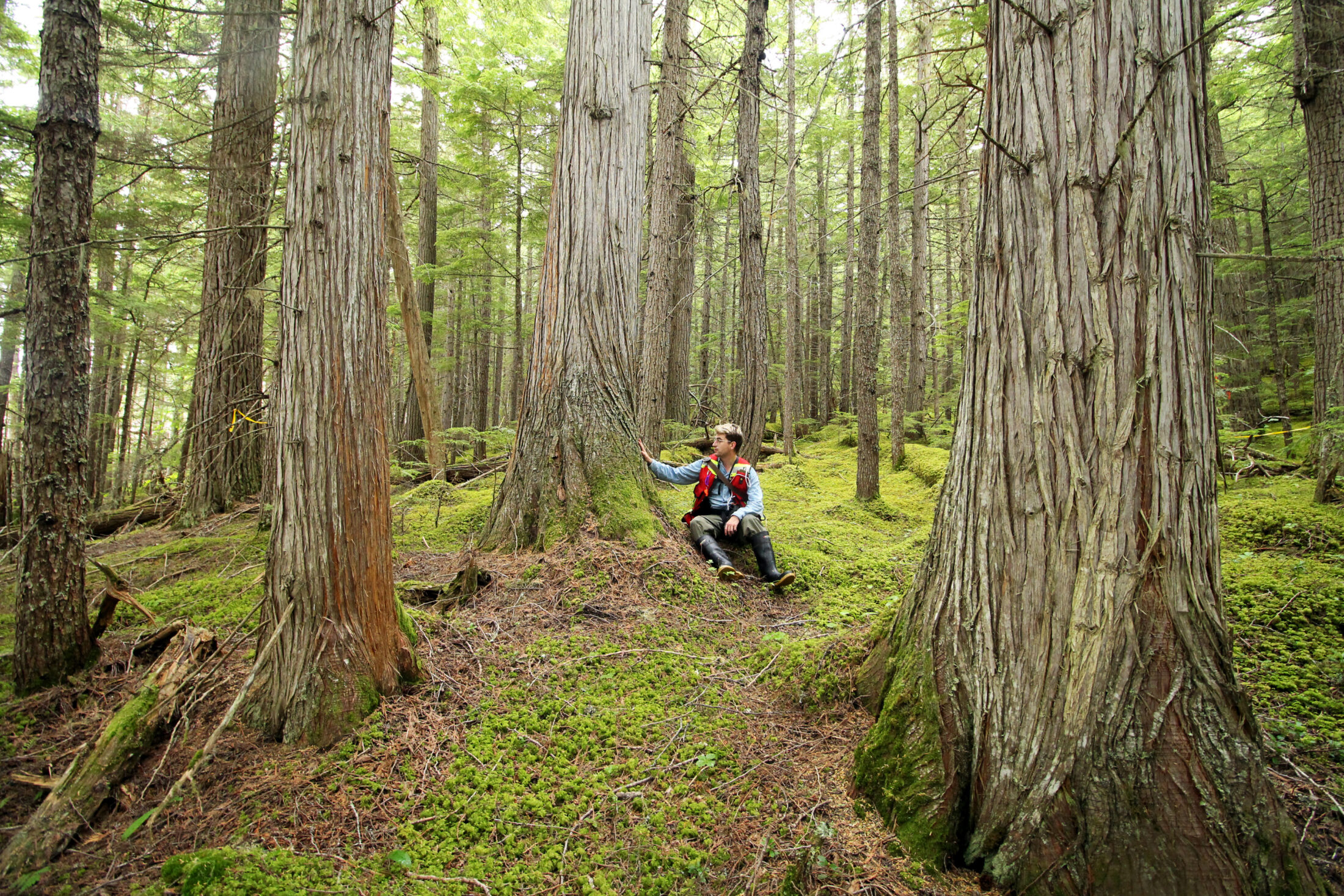
Sean O’Rourke sits among among ancient red cedars in a planned pellet cutblock. Photo: Conservation North
Recently, the province handed out a number of grants to support projects that take trees that would otherwise be burned on the forest floor in massive slash piles and convert them to pellets. Pacific BioEnergy has received more than $3.2 million from the province through the Forest Enhancement Society for projects related to its operations.
Connolly said the province’s push to support the pellet industry is problematic. “We’re kind of rearranging the deck chairs, you know? They’re making little modifications of things they already do, instead of actually looking at the value of keeping the carbon in forests.”
The Ministry of Forests could not comment on this story because government communications are limited to health and public safety information during election periods.
The Narwhal also requested an interview with Pacific BioEnergy but did not receive a response by publication time.
Wood pellets, sometimes referred to as biomass or bioenergy, are often touted as carbon neutral and sustainable, but critics claim that’s a dangerous misconception.
Burning wood to generate energy is less efficient than burning fossil fuels, which means more wood is needed to produce an equivalent amount of electricity, according to Pojar. More carbon dioxide is sent into the atmosphere from pellet-fuelled power plants than traditional coal or natural gas plants, he pointed out.
The pellet industry and its supporters argue that replanting trees will eventually sequester carbon dioxide from the atmosphere, which means burning pellets for heat or energy is carbon neutral. But even if that is true, it could take hundreds of years for those replanted trees to grow big enough to offset the emissions produced by harvesting, transporting, processing and burning the wood.
“It’s so ridiculous to claim that somehow logging is good for the climate.”
In a 2019 report entitled Forestry and Carbon in BC, Pojar outlined myths and misconceptions about emissions and the forestry industry. “The CO2 from the combustion of biofuel is released almost instantly, whereas the growth and regrowth of wood takes several decades at least (mostly more than 75 years in B.C.)”
Connolly, who was an editor of the report, said the green narrative around the pellet industry and industrial logging is misleading.
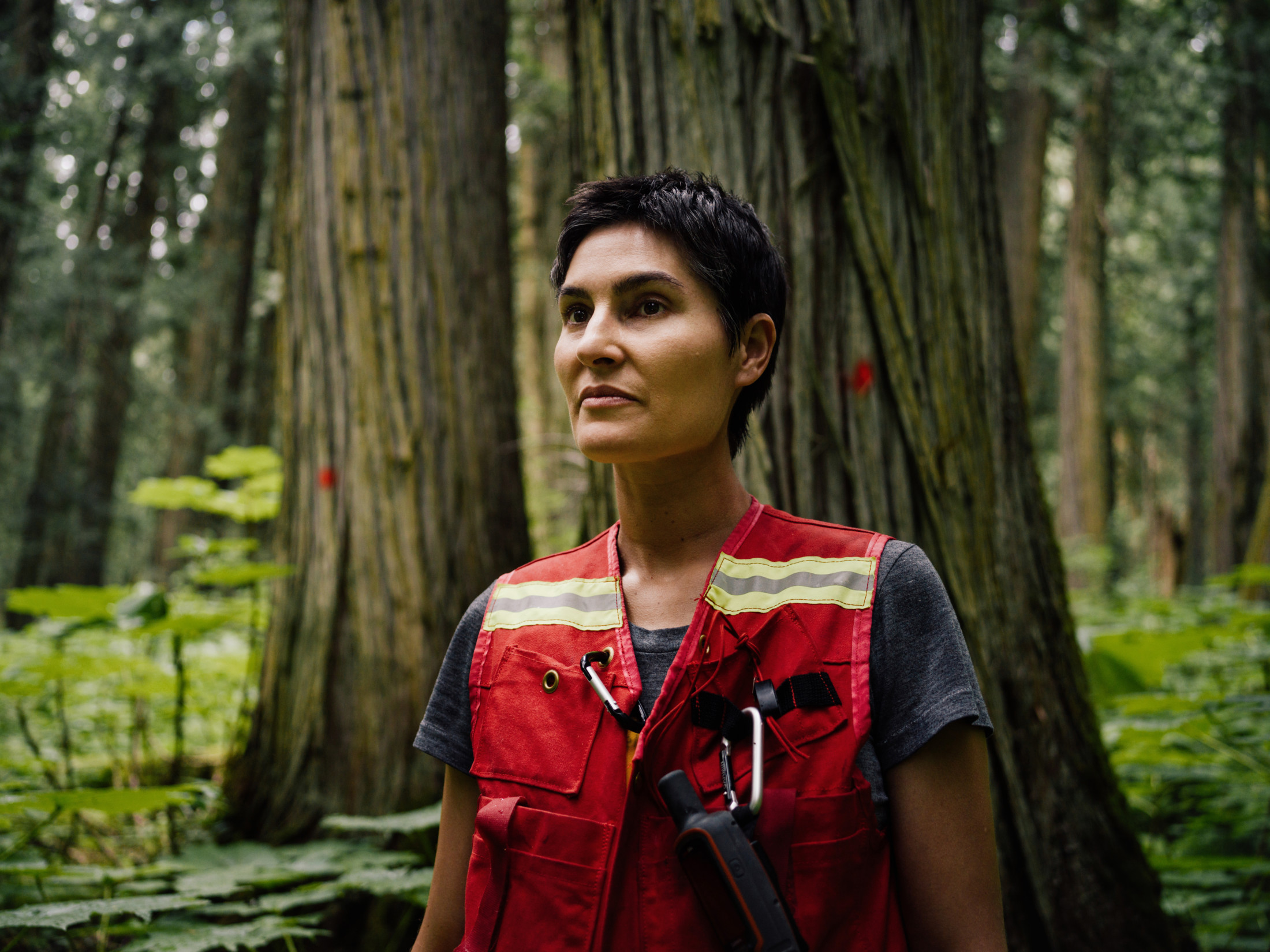
Michelle Connolly in B.C.’s rare inland rainforest. Photo: Taylor Roades / The Narwhal
“It’s so ridiculous to claim that somehow logging is good for the climate,” she said. “What we’ve seen happen is that the B.C. government and industry have co-opted climate change to argue for more industrial logging. In this case, it’s for pellets, but they’ve been doing the same thing for harvested wood products for the last few years.”
As climate change, industrial logging and other resource extraction projects continue to impact forest ecosystems, maintaining intact primary and old-growth forests is essential, she said.
“B.C. claims to be exploring all emissions reductions opportunities, but they are not,” she said. “They’re ignoring basically the biggest, best and cheapest opportunity, which is protecting nature. If we’re going to meet our climate commitments, keeping primary forests intact is an important step and what all of us should be asking is, ‘Why are they totally ignoring this?’ ”
Get the inside scoop on The Narwhal’s environment and climate reporting by signing up for our free newsletter. When I visited my reserve, Moose Factory,...
Continue reading
Xatśūll First Nation is challenging B.C.’s approval of Mount Polley mine’s tailings dam raising. Indigenous...

As the top candidates for Canada’s next prime minister promise swift, major expansions of mining...

Financial regulators hit pause this week on a years-long effort to force corporations to be...

